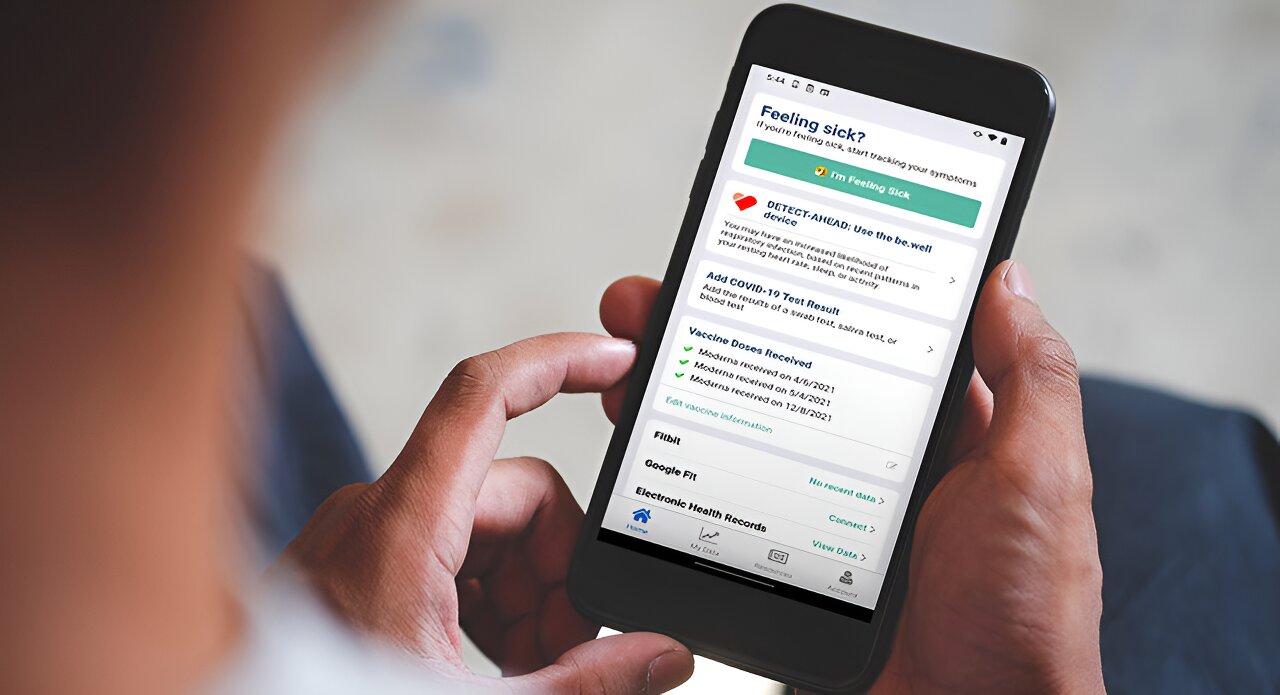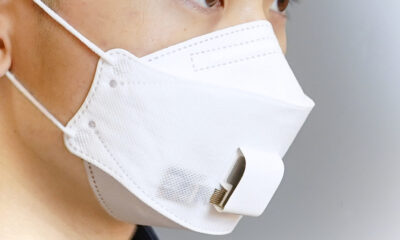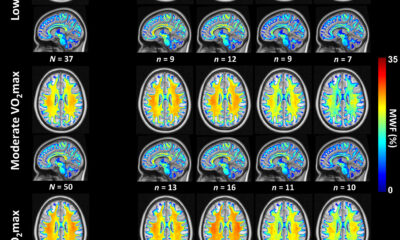Health
Research suggests ways to improve health alerts for wearable sensors

The new study tested the feasibility of using wearable sensors and associated alerts to guide people’s behavior. Credit: Scripps Research
When apparently healthy people get an alert from a wearable sensor telling them they may have a respiratory virus – based on small changes in their unique heart rate, sleep and activity patterns – what do they do? According to a new study from scientists at Scripps Research, conducted at the height of the COVID-19 pandemic, only a quarter of people follow up such a warning with an at-home viral test.
That’s just one conclusion of the new study, published in The Lancet Digital Health on July 24, 2024, which tested the feasibility of using wearable sensors and associated alerts to guide people’s behavior. The article is titled “Wearable Sensor Cues and Self-Reported Symptoms to Encourage Home Testing for Acute Respiratory Viruses: A Digitally Enhanced Randomized Clinical Pilot Study.”
The findings also underscore the importance of timing alerts correctly and communicating them in a personalized way, which has broad implications for the design and clinical deployment of new wearable sensors that track everything from infections and blood sugar levels to women’s menstrual cycles or pregnancies .
“The exciting thing about this research is that we showed that we can provide an individualized infection alert based on data passively monitored by sensors,” said first author Giorgio Quer, Ph.D., director of artificial intelligence at Scripps Research Translational Institute and Assistant Professor of Digital Medicine at Scripps Research, “and we understood the key limitations in providing this warning to participants. We need to keep in mind how to communicate these changes to people so that they lead to actionable behavioral changes.”
In an earlier study, Quer and his colleagues found that data from wearable fitness and health monitors can be used to determine – with around 80% accuracy – whether someone is likely to have COVID-19. More sleep, less activity and a higher resting heart rate than normal were associated with having a respiratory infection.
In the new study, Quer’s team tested whether alerting people to these changes could prompt them to self-test for COVID-19 and respiratory syncytial virus (RSV) at home, even if they had no symptoms yet.
Between September and December 2021, the researchers enrolled 450 adults living in the US. Participants were divided into three groups: those who received alerts asking them to test based on changes detected by a wearable sensor or symptoms (both the sensor and viral tests were provided), those who received alerts only based on of reported symptoms, and those who did not receive warnings or tests.
“There are both individual and public health benefits to alerting people to early physiological changes that could signal a viral infection,” said Steven Steinhubl, MD, senior author, adjunct at Scripps Research and professor of Biomedical Engineering at Purdue University. “It can give people additional time to isolate, change their plans and prevent the spread of the virus.”
Over the course of the study, 118 participants (39%) were asked to perform a self-test at least once, with 62 of these people (52%) successfully performing the self-test and recording the results.
People were more likely to be asked to self-test due to symptoms and were more likely to self-test if they had symptoms; 23% of those asked to test due to changes in sensor data actually tested, while 56% tested when prompted due to their symptoms.
One reason the researchers suspect this trend: Alerts based solely on sensor data were issued at a set time in the morning, when people might not be immediately available for testing. However, symptom-based alerts were issued at the same time that symptoms were reported, when people were likely thinking about the possibility of a virus and had a few spare minutes.
“This is something that we think is very important to keep in mind for future wearable health monitoring studies,” says Quer. “The timing with which you alert people to changes in their health is crucial if you ultimately want to influence behavior.”
Among the other findings from the study on the feasibility of digital health: it was possible for the researchers to recruit a very diverse population because it did not require in-person visits to medical centers or doctors. But finding infection information in the electronic medical records provided proved more difficult than expected.
Quer says these types of lessons are critical to developing future studies using wearable health monitors. For example, his team is investigating whether sensors can help warn pregnant women of an increased risk of health complications such as gestational diabetes, preeclampsia or premature birth.
“We need to study not only how to make these kinds of predictions, but also how to return information to patients in a useful way,” he says.
More information:
Giorgio Quer et al., Feasibility of wearable sensor signals and self-reported symptoms as prompts for home testing for acute respiratory viruses in the US (DETECT-AHEAD): a decentralized randomized controlled trial, The Lancet Digital Health (2024). DOI: 10.1016/S2589-7500(24)00096-7. www.thelancet.com/journals/lan … (24)00096-7/fulltext
Quote: Timing Matters: Study Suggests Ways to Improve Health Alerts for Wearable Sensors (2024, July 25) Retrieved July 25, 2024 from https://medicalxpress.com/news/2024-07-ways-wearable-sensor-health.html
This document is copyrighted. Except for fair dealing purposes for the purpose of private study or research, no part may be reproduced without written permission. The content is provided for informational purposes only.













